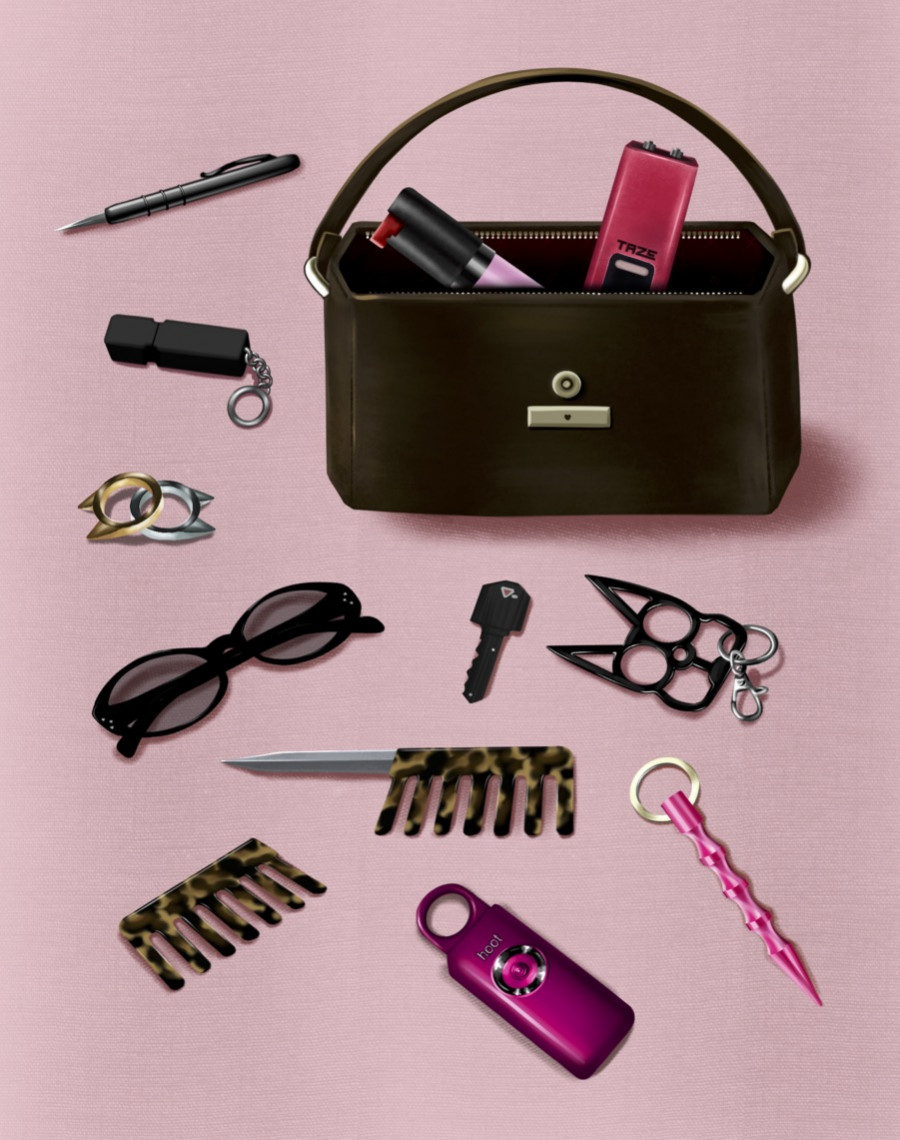Safety or legality?
Why some people decide to carry self-defence tools despite legal limits in Canada
In Canada, carrying or using many self-defence tools remains illegal, including most knives, pepper spray, stun guns, maces, keychain batons and kubotans with concealed knives.
Pepper spray is classified as an illegal weapon under the Firearms Act, making its manufacture, sale or use—including homemade versions—a criminal offence. Only Canadians who acquire a Possession and Acquisition License can own and carry pepper spray.
Yet, the legal risks have not stopped people from engaging with these tools in the face of safety concerns.
An individual who was granted anonymity for safety reasons told The Link that she owns and carries a keychain baton. She bought it online as part of a toolkit that included an alarm and a seatbelt cutter.
“I just wanted to feel safer because I know I often go out at night or finish class later,” she said. “I knew a knife would be too illegal.”
She explained that, to her, the connotation of carrying a knife is much different from a tool like a baton. Even though she knew that carrying a baton was also illegal, she wanted something that could help her feel more secure and in control, especially when walking alone in the city.
“I’ve never used it, but I’ve had many occasions where I took it out of my purse or my bag,” she said. “I always feel unsafe, but about once a month is when I have really creepy situations where I’m being followed.”
According to a 2020 Statistics Canada report, only 33 per cent of women in Montreal felt very safe walking alone after dark, compared to 60 per cent of men. The same report found that women in Montreal were significantly more likely to experience unwanted sexual conduct in public than men. However, carrying a concealed weapon is also prohibited in Canada under section 90.1 of the Criminal Code.
“Sometimes [possessing this tool] makes me feel more at risk,” she said, referring specifically to her presence at protests. “I feel unsafe for having it in my bag […] because I’m so afraid that I might be untruthfully arrested for something.”
She expressed her fear of being illegally searched, which is why she leaves her self-defence tools at home during those moments—even though doing so strips away what she calls her “only sense of safety.”
Robert Razgoev is the general manager of CANARMOR, a body armour manufacturer in Ontario. Their products serve directly as defensive measures against potential attackers.
“Everything is meant to defend,” Razgoev said. “We don't mean to offend—not to attack—just to defend. So, that makes our products legal.”
He says that, since most weapons are illegal, whether for self-defence or not, the only resource left is body armour.
“All we have left is just to buy something—some piece of protection—to protect our bodies until we have a safe place to hide,” Razgoev said.
The Criminal Code of Canada defines a prohibited weapon as any device designed to injure, immobilize or incapacitate a person.
Even so, sentiment differs on the use of this definition for self-defence tools. Catherine Raymond, a Montreal resident, expressed confusion over why a temporary tool like pepper spray is categorized as a weapon, noting that it could provide marginalized communities with a chance to escape dangerous situations.
Raymond is not alone in wanting tools like pepper spray to be legalized. In 2021, former Alberta justice minister Kaycee Madu sent a request to the federal government to amend the criminal code to allow carrying pepper spray for self-defence. Ottawa denied the request.
The limited legally permissible tools for self-defence in Canada include alarms and flashlights, as well as dog spray which can be used against wildlife but not on people.
“It’s just a self-defence tool, it shouldn’t be illegal,” Raymond said about pepper spray. “It’s gonna save more lives than hurt someone’s eyes, you know.”
With files from Hannah Vogan
This article originally appeared in Volume 45, Issue 4, published October 22, 2024.


_600_832_s.png)

-4_600_375_90_s_c1.jpg)


